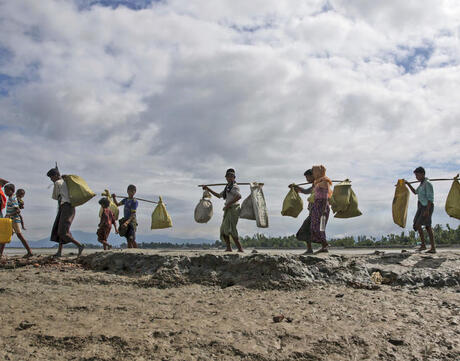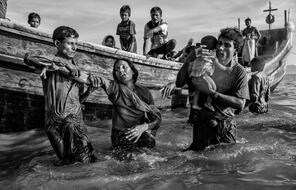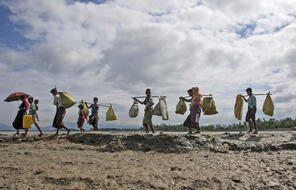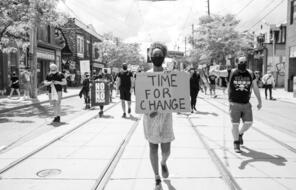
Responding to the Rohingya Crisis
At a Glance
Language
English — USSubject
- History
- Social Studies
Grade
6–12Duration
Two 50-min class periods- Racism
Overview
About This Lesson
Since late August 2017, the Rohingya, a minority Muslim group in predominantly Buddhist Myanmar, have been under attack by the country’s military. As of fall 2017, over 500,000 refugees are thought to have fled Myanmar, most to neighboring Bangladesh. In this lesson about the Rohingya, students will put this crisis in historical context, view footage from one of the refugee camps, and hear a survivor’s testimony. They will also have the opportunity to reflect upon and discuss both the role individual stories play in the telling of history and the international community’s obligation in the face of what the United Nations’ top human rights official has called a “textbook case of ethnic cleansing.”
The firsthand accounts of individuals who were targeted by or witnessed genocide and other atrocities humanize these events by allowing individual stories and voices to give shape and nuance to news articles’ facts and figures. Testimonies are never easy to hear, but they are an important part of bearing witness—of honoring those victimized by violence, their experiences, their stories, their losses, their perseverance, and their courage.
While we believe it is important to create space in the classroom to hear and respond to survivors’ voices, most of the Rohingyas’ testimonies, especially those told by women and young girls who have been subjected to beatings and systematized rape, are too graphic to use in a classroom context. For this lesson, we have selected a video from a Rohingya refugee camp in Bangladesh that includes the testimony of an elderly woman whose story, while horrific, does not necessarily represent the severity of violence and atrocity many survivors of this crisis have faced. Still, it is important that you view and read the materials for this lesson before deciding whether or not they are appropriate for your students.
Preparing to Teach
Lesson Plans
Activities
Extension Activities
Materials and Downloads
Resources from Other Organizations
Additional Resources
Unlimited Access to Learning. More Added Every Month.
Facing History & Ourselves is designed for educators who want to help students explore identity, think critically, grow emotionally, act ethically, and participate in civic life. It’s hard work, so we’ve developed some go-to professional learning opportunities to help you along the way.
Exploring ELA Text Selection with Julia Torres
On-Demand

Working for Justice, Equity and Civic Agency in Our Schools: A Conversation with Clint Smith
On-Demand

Centering Student Voices to Build Community and Agency
On-Demand
















